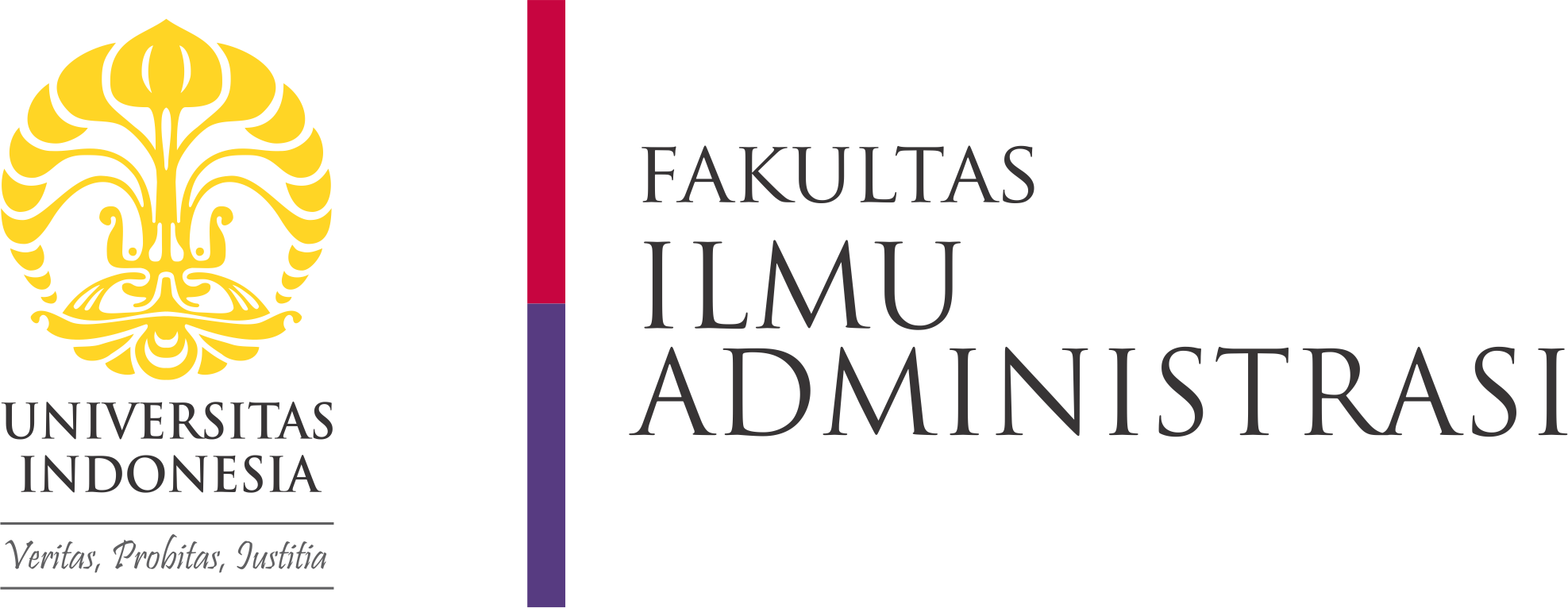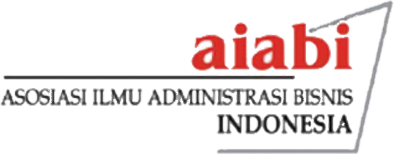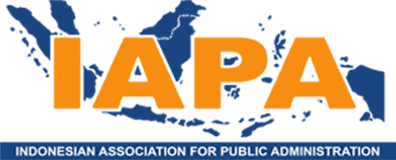Abstract
The crises have spread out globally and have impacted industries, either large firms or small firms. These impacts make the firms economically in intense trouble or file bankruptcies and lay off their employees, as their incomes are falling significantly globally. Therefore, this study investigates how businesses can improve their resilience and be prepared to cope with crises and threats in this disruptive era. What were the strategies the firm has implemented?
The authors have conducted this research in PT Alpha by using the process Tracing case study method in semi-structured interviews with eight critical respondents in ten in-depth interviews, split into a pilot study and the triangulation period based on those initial inputs. The authors have used process tracing analysis to test the evidence.
The results showed that the major businesses need to concentrate on the three phases as a process, i.e., preparation and anticipation, coping and improvisation, and recovery and transformation, to be resilient (it is an enhancement of the concept of Duchek, 2020). To have a more comprehensive view, the authors have extended the research from the economic crises in 1998 and 2008 till 2019; thus, the process-tracing case study is a suitable method. This method has been used a lot for historical settings. This paper recommends further research to expand the studies to other large established companies in similar segments or other segments.
References
Amankwah-Amoah, J., Khan, Z., & Wood, G. (2020). COVID-19 and business failures: The paradoxes of experience, scale, and scope for theory and practice. European Management Journal. https://doi.org/10.1016/j.emj.2020.09.002
Annarelli, A., & Nonino, F. (2016, Jul 1). Strategic and operational management of organizational resilience: Current state of research and future directions. Omega (United Kingdom). Elsevier Ltd. https://doi.org/10.1016/j.omega.2015.08.004de
Appelbaum, S. H., Keller, S., Alvarez, H., & Bédard, C. (2012). Organizational crisis: Lessons from Lehman brothers and Paulson and company. International Journal of Commerce and Management, 22(4), 286–305. https://doi.org/10.1108/10569211211284494.
Beach, D., & Pedersen, R. B. (2013). Process-tracing methods: Foundations and guidelines. Process-tracing Methods: Foundations and Guidelines (pp. 1–199). University of Michigan Press. https://doi.org/10.1177/0094306115599351g.
Beach, D., & Beach, D. (2017). Process-Tracing Methods in Social Science. In OxfordResearch Encyclopedia of Politics. Oxford University Press. https://doi.org/10.1093/acrefore/9780190228637.013.176.
Blatter, J., & Blume, T. (2008). In search of co-variance, causal mechanisms or congruence? Towards a plural understanding of case studies. Swiss Political Science Review, 14(2), 315–356. https://doi.org/10.1002/j.1662- 6370.2008.tb00105.x
Boin, A., & Eeten, M. J. G. V. (2013). The Resilient Organisation: A critical appraisal. Public Management Review, 15(3), 429–445.
Bundy, J., Pfarrer, M. D., Short, C. E., & Coombs, W. T. (2017). Crises and Crisis Management: Integration, Interpretation, and Research Development. Journal of Management, 43(6), 1661–1692. https://doi.org/10.1177/0149206316680030.
Burmann, C., Schaefer, K., & Maloney, P. (2008). Industry image: Its impact on the brand image of potential employees. Journal of Brand Management, 16(3), 159-176. http://dx.doi.org/10.1057/palgrave.bm.2550112
Burnard, K., & Bhamra, R. (2011). Organisational resilience: Development of a conceptual framework for organisational responses. International Journal of Production Research, 49(18), 5581–5599. https://doi.org/10.1080/00207543.2011.563827
Carayannis, E. G., Grigoroudis, E., Sindakis, S., & Walter, C. (2014). Business Model Innovation as Antecedent of Sustainable Enterprise Excellence and Resilience. Journal of the Knowledge Economy, 5(3), 440–463. https://doi.org/10.1007/s13132-014-0206-7
Cavaco, Nuno Alexandre Correia Martins (2016), Design of a Sustainable Competitiveness Evaluation and Execution System (SuCEES), Faculdade de Ciências e Tecnologia and Universidade Nova de Lisboa, http://hdl.handle.net/10362/20211.
Chigbu, U. E. (2019). Visually hypothesizing in scientific paper writing: Confirming and refuting qualitative research hypotheses using diagrams. Publications, 7(1). https://doi.org/10.3390/PUBLICATIONS7010022
Chu, Y.H., (2015), RESILIENCE CAPABILITIES IN THE FACE OF ENVIRONMENTAL TURBULENCE: THE CASE OF HONGKONG SMALL TO MEDIUM ENTERPRISES. RMIT University. Retrieved from: https://researchbank.rmit.edu.au/view/rmit:161547. Downloaded on: Aug 28, 2019
Christensen, C.M. (2016). The Innovator's Dilemma: When New Technologies Cause Great Firms to Fail. Harvard Busines Review Press.
Christensen, C. M., Raynor, M., & McDonald, R. (2016). What is disruptive innovation? Harvard Business Review. Harvard Business School Publishing.
Collier, D., Brady, H. E., & Seawright, J. (2004). Sources of Leverage in Causal Inference: Toward an Alternative View of Methodology. In H. E. Brady & D. Collier (Eds.), Rethinking Social Inquiry: Diverse Tools, Shared Standards (Vol. 34, pp. 229–266). Rowman&Littlefield. https://doi.org/10.1177/009430610503400570.
Collier, D. (2011). Understanding process tracing. PS - Political Science and Politics, 44(4), 823–830. https://doi.org/10.1017/S1049096511001429.
Dayton, Bruce W. ed. 2004. Managing Crises in the Twenty-First Century. International Studies Review 6: 165–194.
Deloitte University Press. (2016). Approaching disruption: Charting a course for new growth and performance at the edge and beyond. https://www2.deloitte.com/us/en/insights/focus/disruptive-strategy-patterns-case-studies/approaching-disruption-for-growth-performance.html.
Demmer, W. A., Vickery, S. K., & Calantone, R. (2011). Engendering resilience in small-and medium-sized enterprises (SMEs): A case study of Demmer Corporation. International Journal of Production Research, 49(18), 5395–5413. https://doi.org/10.1080/00207543.2011.563903.
Dervitsiotis, K. N. (2003). The pursuit of sustainable business excellence: Guiding transformation for effective organizational change. Total Quality Management and Business Excellence, 14(3), 251–267. https://doi.org/10.1080/1478336032000046599
Duchek, S. (2020). Organizational resilience: a capability-based conceptualization. Business Research, 13(1), 215–246. https://doi.org/10.1007/s40685-019-0085-7
Duchek, S., Raetze, S., & Scheuch, I. (2019). The role of diversity in organizational resilience: a theoretical framework. Business Research. https://doi.org/10.1007/s40685-019-0084-8
Duit, A. (2016). RESILIENCE THINKING: LESSONS FOR PUBLIC ADMINISTRATION. Public Administration, 94(2), 364–380. https://doi.org/10.1111/padm.12182
Dun & Bradstreet Worldwide Network. (2019). Global Bankruptcy Report 2019. https://www.dnb.com/content/dam/english/economic-and-industry-insight/DNB_Global_Bankruptcy_Report_2019.pdf
Esteve-Pérez, S., & Mañez-Castillejo, J. A. (2008). The resource-based theory of the firm and firm survival. Small Business Economics, 30(3), 231–249. https://doi.org/10.1007/s11187-006-9011-4.
Euchner, J. (2017). Creating a culture of innovation. Research-Technology Management, 60(6), 10-11. DOI: 10.1080/08956308.2017.1373043.
Fiksel, J., Polyviou, M., Croxton, K. L. and Pettit, T.J. (2015). From risk to resilience: Learning to deal with disruption. MIT Sloan Management Review, 56(2), pp. 79-86.
Garicano, L., & Rayo, L. (2015). Why organizations fail: Models and cases. St. Louis: Federal Reserve Bank of St Louis. Retrieved from https://search.proquest.com/docview/1698277367?accountid=31562
Gok, K., Deshpande, S., Deshpande, A. P., & Hunter, G. (2012). Comparing promoter and employee attributions for the causes of firm failure: the case of an Indian petrochemical company. International Journal of Human Resource Management, 23(12), 2576–2596. https://doi.org/10.1080/09585192.2011.610514.
Hamel, G., & Välikangas, L. (2003). The quest for resilience. Harvard Business Review, 81(9), 52–63, 131. Retrieved from http://www.ncbi.nlm.nih.gov/pubmed/12964393.
Hyde, K. F. (2000). Recognising deductive processes in qualitative research. Qualitative Market Research, 3(2), 82-89. doi:http://dx.doi.org/10.1108/13522750010322089
Homburg, C., & Pflesser, C. (2000). A multiple-layer model of market-oriented organizational culture: Measurement issues and performance outcomes. Journal of Marketing Research. American Marketing Association. https://doi.org/10.1509/jmkr.37.4.449.18786
Horney, N., Pasmore, B., & O’Shea, T. (2010). Leadership Agility: A Business Imperative for a VUCA World. Human Resource Planning, 33(4), 32–38. Retrieved from http://luxorgroup.fr/coaching/wp-content/uploads/Leadership-agility-model.pdf
Hyken, S. (2016), “Customer Service Leadership – Using VUCA Leadership Principles”, available at: https://hyken.com/customer-service-culture/guest-blog-9/
James, E. H., & Wooten, L. P. (2010). Leading under pressure: From surviving to thriving before, during, and after a crisis. Routledge/Taylor & Francis Group.
Jaworski, B. J., & Kohli, A. K. (1993). Market orientation: Antecedents and consequences. Journal of Marketing, 57(3), 53. Retrieved from https://search.proquest.com/scholarly-journals/market-orientation-antecedents-consequences/docview/227744334/se-2?accountid=31562
Josh Kwicinsk, David Ernst, and James Bamford, 2016, Water Street Insights, https://www.waterstreetpartners.net/why-joint-ventures-fail-by-water-street-partners-insight-pdf-version, downloaded on Apr 19 2019.
Jin, Y., Swanson, D., Waller, M., & Ozment, J. (2017). To survive and thrive under hyper-competition: An exploratory analysis of the influence of strategic purity on truckload motor carrier financial performance. Transportation Journal, 56(1), 1–34. https://doi.org/10.5325/transportationj.56.1.0001
Kaivo-oja, J. R. L., & Lauraeus, I. T. (2018). The VUCA approach as a solution concept to corporate foresight challenges and global technological disruption. Foresight, 20(1), 27–49. https://doi.org/10.1108/FS-06-2017-0022.
Kantur, D., & Arzu, Í. S. (2012). Organizational resilience: A conceptual integrative framework. Journal of Management and Organization, 18(6), 762–773. https://doi.org/10.5172/jmo.2012.18.6.762
Kent, D. H. (1991). Joint ventures vs. Non‐joint ventures: An empirical investigation. Strategic Management Journal, 12(5), 387–393. https://doi.org/10.1002/smj.4250120505
Kickul, J., & Walters, J. (2002). Recognizing new opportunities and innovations: The role of strategic orientation and proactivity in Internet firms. International Journal of Entrepreneurial Behaviour & Research, 8(6), 292–308. https://doi.org/10.1108/13552550210448375.
Limnios, E. A. M., Mazzarol, T., Ghadouani, A., & Schilizzi, S. G. M. (2014). The resilience architecture framework: Four organizational archetypes. European Management Journal, 32, 104-116.
Linnenluecke, M. K. (2017). Resilience in Business and Management Research: A Review of Influential Publications and a Research Agenda. International Journal of Management Reviews, 19(1), 4–30. https://doi.org/10.1111/ijmr.12076.
MacDonald, G., & Ryall, M. (2018). Do new entrants sustain, destroy, or create guaranteed profitability? Strategic Management Journal, 39(6), 1630–1649. https://doi.org/10.1002/smj.2770
Madni, A. M., & Jackson, S. (2009). Towards a conceptual framework for resilience engineering. IEEE Systems Journal, 3(2), 181–191. https://doi.org/10.1109/JSYST.2009.2017397.
Mallak, L. (1998). Putting organizational resilience to work. Industrial Management (Norcross, Georgia), 40(6 NOV./DEC.), 8–13.
Mamouni Limnios, E. A., Mazzarol, T., Ghadouani, A., & Schilizzi, S. G. M. (2014). The resilience architecture framework: Four organizational archetypes. European Management Journal, 32(1), 104–116. https://doi.org/10.1016/j.emj.2012.11.007
McManus, S. (2008). Organisational Resilience in New Zealand. University of Canterbury, 150. Retrieved from https://ir.canterbury.ac.nz/handle/10092/1574
Molina-Morales, F. X., Martínez-Cháfer, L., & Valiente-Bordanova, D. (2017). Disruptive technological innovations as new opportunities for mature industrial clusters. The case of digital printing innovation in the spanish ceramic tile cluster. Investigaciones Regionales, 2017(39), 39–57.
Morais-Storz, M., Stoud Platou, R., & Berild Norheim, K. (2018). Innovation and metamorphosis towards strategic resilience. International Journal of Entrepreneurial Behaviour and Research, 24(7), 1181–1199. https://doi.org/10.1108/IJEBR-11-2016-0369.
Pal, Rudrajeet (2013). Organizational Resilience through Crisis Strategic Planning. Downloaded: https://www.researchgate.net/publication/338674556_Organizational_Resilience_through_Crisis_Strategic_Planning/stats. Downloaded on May 10, 2020.
Pal, R., Torstensson, H., & Mattila, H. (2014). Antecedents of organizational resilience in economic crises—an empirical study of Swedish textile and clothing SMEs. International Journal of Production Economics, 147, 410–428
Patrick, J., & James, N. (2004). Process tracing of complex cognitive work tasks. Journal of Occupational and Organizational Psychology, 77(2), 259–280. https://doi.org/10.1348/096317904774202171.
Pavone, T. (2015). CASE STUDIES AND PROCESS TRACING OUTLINE. Retrieved from https://pdfs.semanticscholar.org/ 67ed/9f315c82c916f081de30e212d7d39dd699d5.pdf
Rerup, C. (2001), “Houston, we have a problem: anticipation and improvisation as sources of organizational resilience,” Organizational Behavior and Management, Vol. 7 No. 1, pp. 27-44.
Reinmoeller, P., & Van Baardwijk, N. (2005, June). The link between diversity and resilience. MIT Sloan Management Review.
Rowold, J., & Schlotz, W. (2009). Transformational and transactional leadership and followers’ chronic stress. Spring, 9(5), 35–48. Retrieved from http://www.leadershipreview.org/2009spring/article1_spring_2009.asp.
Ruiz-Martin, C., López-Paredes, A., Wainer, G. (2018). What we know and do not know about organizational resilience. International Journal of Production Management and Engineering, 6(1), 11-28. https://doi.org/10.4995/ijpme.2018.7898.
Santiago, A. (2015). Inertia as inhibiting competitiveness in Philippine family businesses. Journal of Family Business Management, 5(2), 257–276. https://doi.org/10.1108/JFBM-07-2014-0015.
Sawalha, I. H. S. (2015). Managing adversity: Understanding some dimensions of organizational resilience. Management Research Review, 38(4), 346–366. https://doi.org/10.1108/MRR-01-2014-0010.
Seville, E. (2018). Building resilience: how to have a positive impact at the organizational and individual employee level. Development and Learning in Organizations, 32(3), 15–18. https://doi.org/10.1108/DLO-09-2017-0076.
Shang, T., Miao, X., & Waheed, A. (2019). A historical review and bibliometric analysis of disruptive innovation. International Journal of Innovation Science, 11(2), 208-226. doi:http://dx.doi.org/10.1108/IJIS-05-2018-0056
Sheffi Y, Rice Jr JB. A supply chain view of the resilient enterprise. MIT Sloan Management Review2005;47(1):41–48þ94.
Simatupang, T. M., Sandroto, I. V., & Lubis, S. B. H. (2004). Supply chain coordination in a fashion firm. Supply Chain Management. https://doi.org/10.1108/13598540410544953
Skeel, David. “Bankruptcy and the Coronavirus,” Brookings Economic Studies, 2020.
Staber, U., & Sydow, J. (2002, December). Organizational adaptive capacity: A structuration perspective. Journal of Management Inquiry. https://doi.org/10.1177/1056492602238848
S. Tengblad and M. Oudhuis (eds.), The Resilience Framework, Work, Organization, and Employment, DOI 10.1007/978-981-10-5314-6_1.
Tengblad, S. (2018). A Resource-Based Model of Organizational Resilience. In S. Tengblad (Ed.). The Resilience Framework: Organizing for Sustained Viability. Singapore: DOI 10.1007/978-981-10-5314-6.
Sutcliffe, K. M., & Vogus, T. J. (2003). Organizing for resilience. In K. S. Cameron, J. E. Dutton, & R. E. Quinn (Eds.), Positive Organizational Scholarship: Foundations of a New Discipline (pp. 94–110). San Francisco: Berrett-Koehler Publishers, Inc.
Tansey, O. (2007). Process tracing and elite interviewing: A case for non-probability sampling. In PS - Political Science and Politics (Vol. 40, pp. 765–772).
Tessem, B. (2017). The customer effect in agile system development projects. A process-tracing case study. In Procedia Computer Science (Vol. 121, pp. 244–251). Elsevier BV https://doi.org/10.1016/j.procs.2017.11.034.
Tobing, S. Y. L., & Fitriati, R. (2009). Pengaruh Organisasi Pembelajar terhadap Kompetensi Pegawai Bank. Jurnal Ilmu Administrasi & Organisasi (Vol. 16, pp. 25–35).
Trampusch, C., & Palier, B. (2016). Between X and Y: how process tracing contributes to opening the black box of causality. New Political Economy, 21(5), 437–454. https://doi.org/10.1080/13563467.2015.1134465.
Teixeira, E. de O., & Werther, W. B. (2013). Resilience: Continuous renewal of competitive advantages. Business Horizons, 56(3), 333–342. https://doi.org/10.1016/j.bushor.2013.01.009
Välikangas, L., & Romme, G. (2014). How to Design for Strategic Resilience: A Case Study in Retailing. Journal of Organization Design, 2(2), 44. https://doi.org/10.7146/jod.7360.
Van Evera, S. (2017). Guide to Methods for Students of Political Science. Guide to Methods for Students of Political Science. Cornell University Press. https://doi.org/10.7591/9780801454455.
Vogus, T. J., & Sutcliffe, K. M. (2007). Organizational resilience: Towards a theory and research agenda. In Conference Proceedings - IEEE International Conference on Systems, Man and Cybernetics (pp. 3418–3422). https://doi.org/10.1109/ICSMC.2007.4414160.
Waldner, D. “Process tracing and causal mechanisms” In The Oxford handbook of the philosophy of social science H. Kincaid, Ed. Oxford: Oxford University Press, pp. 65–84, 2012.
Walker, B., Holling, C. S., Carpenter, S. R., & Kinzig, A. (2004). Resilience, adaptability, and transformability in social-ecological systems. Ecology and Society, 9(2). https://doi.org/10.5751/ES-00650-090205.
Williams, T. A., Gruber, D. A., Sutcliffe, K. M., Shepherd, D. A., & Zhao, E. Y. (2017). Organizational response to adversity: Fusing crisis management and resilience research streams. Academy of Management Annals, 11(2), 733–769. https://doi.org/10.5465/annals.2015.0134
Wilson, D. F. (1999). Competitive marketing strategy in a volatile environment: Theory, practice and research priorities. Journal of Strategic Marketing, 7(1), 19–40. https://doi.org/10.1080/096525499346512
Winnard, J., Adcroft, A., Lee, J., & Skipp, D. (2014). Surviving or flourishing? Integrating business resilience and sustainability. Journal of Strategy and Management, 7(3), 303–315. https://doi.org/10.1108/JSMA-11-2012-0059.
Xu, L., & Kajikawa, Y. (2018, Jan 1). An integrated framework for resilience research: a systematic review based on citation network analysis. Sustainability Science. Springer Tokyo. https://doi.org/10.1007/s11625-017-0487-4.
Yin, R. K. (2014). Case study research: Design and methods (5th ed.). Thousand Oaks, CA: SAGE Publications (p. 312).
Y. Xiao-nan and Z. Jian-Xin, “Resilience: the psychological mechanism for recovery and growth,” Advances in Psychological Science, vol.5, no. 5, pp.658–665,2005.
Reading Recommendation
Amit, R. (‘Raffi”) H., & Zott, C. (2010). Business Model Innovation: Creating
Value in Times of Change. SSRN. https://doi.org/10.2139/ssrn.1701660.
Asia Perspective, (2020, Aug 16), “Issue 2 2020: Indonesia’s Economy Suffers Sharp Downturn in Q2 Due to COVID-19.” asiaperspective.net/2020/08/12/issue-2-2020-indonesia/.
Banker, R. D., Mashruwala, R., & Tripathy, A. (2014). Does a differentiation strategy lead to more sustainable financial performance than a cost leadership strategy? Management Decision, 52(5), 872–896. https://doi.org/10.1108/MD-05-2013-0282
Gans, J. (2016). The Disruption Dilemma. The Disruption Dilemma. The MIT Press. https://doi.org/10.7551/mitpress/9780262034487.001.0001
M. London, “Toward a theory of career motivation,” Academy of Management Review, vol.8, no. 4, pp.620–630,1983.
Recommended Citation
Tarigan, Moris; Simatupang, Togar Mangihut; and Bangun, Yuni Ros
(2021)
"How Large-established Joint Venture Firm Remains Resilient in a Disruptive Era: A Process Tracing Case Study,"
BISNIS & BIROKRASI: Jurnal Ilmu Administrasi dan Organisasi: Vol. 28:
No.
2, Article 3.
DOI: 10.20476/jbb.v28i2.1269
Available at:
https://scholarhub.ui.ac.id/jbb/vol28/iss2/3






